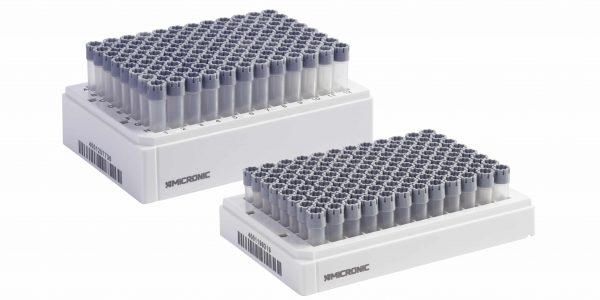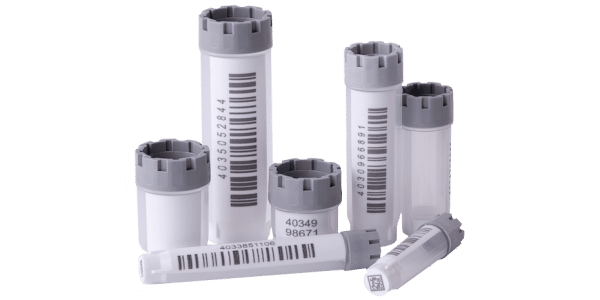

5 FAQs about fresh frozen tissue sample storage
1. What is the best temperature to store my fresh frozen tissue samples?
The best temperature to store samples depends on the characteristics of your samples, on how long you wish to store samples and on the type of downstream analysis you wish to do. If you would like to use samples after years of storage, you should store your samples at extremely low temperatures. While many tissue samples are stored in mechanical freezers at -80°C, it is important to note that at this temperature metabolic activity has not ceased, it has only slowed down. By reducing sample temperatures to below the glass transition phase of water (-132°C), all metabolic activity comes to a halt. Sample storage below this temperature – in vapor phase LN2 – therefore assures a safe form of long-term preservation.
2. How can I increase my tissue sample storage capacity?
An obvious solution is to obtain more freezer space. A more economical solution is however to use your freezer space more efficiently. One way to optimize your freezer storage capacity is to consider the compact Micronic tubes and racks, which are based on ANSI / SLAS standards. Standardizing your storage can more than double the number of samples that you can store in a freezer. You can request a tech note about optimal freezer storage capacity, here. Another way to optimize your freezer capacity is by reducing dead volume inside your tissue storage tube. This means that for each size of tissue sample, a corresponding storage tube size needs to be used.
3. How can I lower the costs of frozen tissue sample storage?
By optimizing freezer storage capacity, the operating costs per sample can be significantly minimized. As described above you can do this by storing your samples in the most efficient way possible. When you double the capacity of your freezers, you can put the same amount of samples in 1 freezer instead of 2 freezers. Reducing the number of operating freezers can significantly reduce maintenance and electricity costs. A freezer which is operating -70°C or -80°C can consume from 16 up to 30 KWH per day, which is about as much energy as an average family household.1
4. What is the best way to trace my tissue samples?
Researchers worldwide have not reached a consensus about the best method of identifying tissue samples. For the complete traceability of tissue samples you can use 2D coded tubes and 1D barcoded racks. These barcodes can be used to identify a sample, its coordinates within a storage rack, the particular rack and the location of the rack in the freezer. The 2D Data-Matrix codes on Micronic tubes are laser-etched on the black code surface of the tissue tubes. The unique injection molding technique used to manufacture these tubes ensures that the code surface cannot be separated from the transparent tube.
5. How can I automate my tissue sample storage workflow?
To automate your workflow you need to store your samples in automation friendly labware. Using barcoded and standardized products makes it possible for automated systems to handle, track and store your tissue samples. Moreover, it’s possible to automate the process of capping and decapping tissue tubes with (de)capping equipment. Additionally, you can scan tube and rack codes and add them to a database. Finally, tissue samples can be added to a fully automated freezer.
- U.S. Department of Energy (2013). Everything You Wanted to Know about Running an Ultra Low Temperature (ULT) Freezer Efficiently but Were Afraid to Ask. Retrieved from: http://apps1.eere.energy.gov/buildings/publications/pdfs/alliances/ulf_freezer_user_guide.pdf

